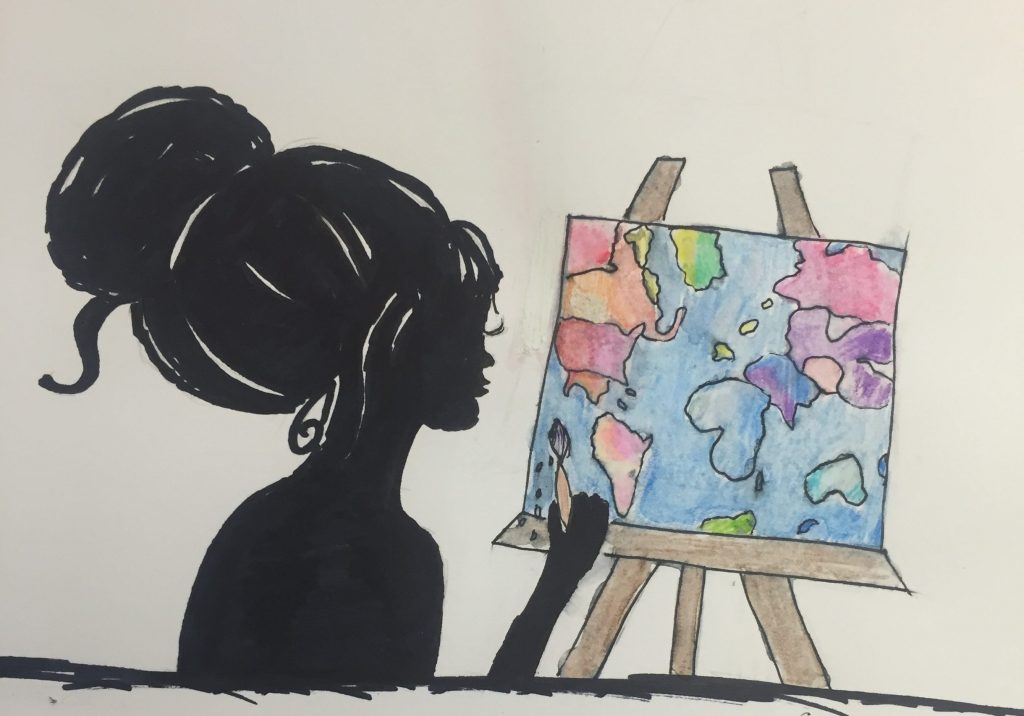Because of the development of our society, there are several platforms that can serve for self expression. One of the most influential ways to speak one’s mind is through art. It does not require words, and striking visual images are unlikely to be disregarded or overlooked by the public. Since the Renaissance Era, art and politics have had a symbiotic relationship, for artistic creations can be influential in both cultural and political spheres. A notorious example is Picasso’s Guernica, which is arguably his most famous and influential work. The painting was Picasso’s visceral reaction to the bombing of the town Guernica during the Spanish Civil War. Guernica was the hub of the Republican resistance movement to the fascist Nationalist Party. The town was bombed by Hitler who saw the little village as the perfect target to test his advanced Luftwaffe (Nazi air force). The destruction and carnage were appalling. Picasso’s highly symbolic work captured the havoc and horror war wreaks on innocent lives. The painting conveys the contradictions of war, containing both symbols of brutality and hope. Guernica, although created in Spain in 1937, proved to be an inspiration and example for other antiwar movements, like Vietnam in the 70s.
Art is the easiest and most accessible way to speak out against a cause. During the AIDS crisis of the 1980s, David Moffett created the work He Kills Me, accusing the Reagan administration of not responding adequately to the crisis, and for not funding research for a cure. This work, among others, brought so much notoriety to the crisis that it encouraged the federal government’s to take AIDS more seriously in the future.
Art can also affect politics in the form of propaganda. One of the most famous, and effective examples is the Nazi propaganda film Triumph of the Will. This was not only enormously effective in idealizing the Nazi Party, but it also displayed stunning and groundbreaking cinematography. Despite the film’s deplorable message, the techniques it employed to highlight and depict the subject have been copied by countless other films, the most notable of them being Star Wars. Triumph of the Will not only had significant influence in the growth and public image of the Nazi Party, it also had a profound effect on the art of motion pictures, extending to today.
Politics and art are just as intertwined in more recent events. In 2013, Chris Christie, governor of New Jersey, closed multiple lanes on the George Washington Bridge, citing a traffic study. Unfortunately, this happened on the first day of school, so many students and commuters encountered great difficulty getting to their destinations on time. It also jeopardized public safety, because ambulances and fire trucks had trouble getting to emergencies. Christie opened it 4 days later, but it was later revealed that there was no traffic study, and he, or a high level official, did it to get political revenge. This scandal tarnished Christie’s reputation as Governor of New Jersey. The renowned cartoonist, Hanoch Piven, managed to depict public sentiment by creating an image of Cristie using toy cars and ambulances, conveying the general message that he is a fool.
With the 2016 presidential elections approaching on Tuesday, November 8th, it is an appropriate time to analyze the scope of art’s influence on today’s politics. Artists can ultimately change our perspectives of candidates. The street artist Lushsux painted a mural of Clinton in a revealing bathing suit stuffed with $100 bills in Melbourne, Australia. When the artist was ordered to remove it, he painted over it with a black hijab. The contrast between the two forms of the work shed light on the fact that many people judge Clinton based on her gender rather than her credentials, whether that judgement is good or bad. Artists have also depicted public sentiment about candidates. Manchester based artist Conor Collins made an image of Trump comprised of his hateful Tweets. A political cartoon in The New Yorker depicts two children fighting, while saying to their parent, “We’re not fighting, we’re debating!” satirizing the contentious tone in the presidential debates. After both the presidential debates, many critics said the candidates resembled petulant, squabbling children rather than dignified politicians. The public response to politics can be gauged by viewing art alone. Art is often inspired by political events, and it manages to capture the public reaction to political controversy, preserving a moment in history for years to come.
Cailin Jacobs
staff writer
Graphics: Justine Umali

